The prospects for rapid state funding of a biking-walking bridge across Interstate 405 dimmed somewhat Monday as a regional advisory committee appointed by the Oregon Department of Transportion ranked it as only the eighth off-street transportation priority for the Portland region.
Top marks went to a 19-acre, $2.6 million parking lot that would help the Ford Motor Co. export more cars to China — though only if Ford agrees to increase its exports via the Port of Portland, which it hasn’t.
As we reported last month, a $5.9 million Flanders Crossing bridge could carry 9,100 biking-walking trips a day, making it (for example) 21 times more cost-efficient per user within a few years than the defunct Columbia River Crossing freeway-rail project would have been by 2035. The City of Portland is hoping $2.9 million could come from the State of Oregon; fees from recent real estate developments would cover the rest.
The Flanders Crossing would sit between the Northwest District, wich has been adding thousands of new homes, and the Pearl District, which has been adding thousands of new jobs.
The regional committee to award grants in the state’s lottery-funded Connect Oregon program identified two local biking-walking projects as higher priorities than Flanders: $700,000 to complete the Tigard Street Trail and $400,000 to complete the Waterhouse Trail in Tualatin.
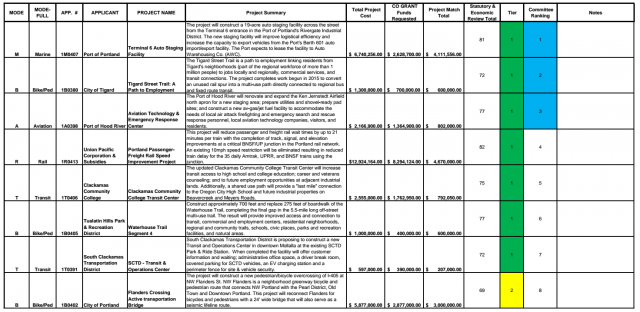
Also beating out Flanders Crossing on the regional ranking were $1.4 million to enlarge the Hood River airfield for firefighting and other tasks; $8.3 million for new tracks that would speed up freight and passenger rail trains through North Portland; $1.8 million for a new transit center at Clackamas Community College; and $390,000 for a new transit center in downtown Mollolla.
You can read the project descriptions and analysis on ODOT’s website.
Flanders beat out various other bike/ped projects including trails in Milwaukie, Wilsonville, Gresham, the Naito Gap in inner Northwest Portland, the Red Electric Trail in Southwest Portland and a “bike station” for the Mount Hood Villages. Of the eight projects ranked lowest by the ODOT-appointed committee, six were biking-walking projects.
Advertisement
‘Backlog’ of city projects lower bridge project’s score
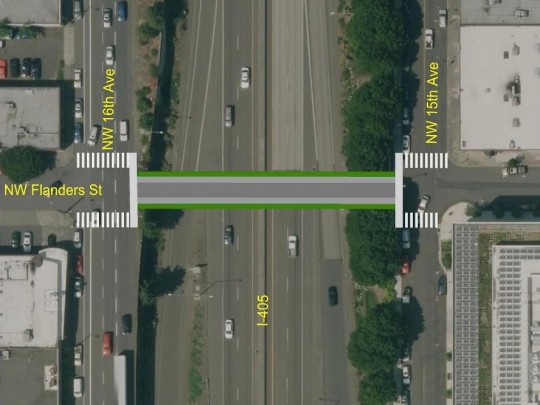
The middling score for the Flanders Bridge doesn’t mean the bridge plan is back on ice after a decade of delays — it could still be funded by the next step in the Connect Oregon process, coming in June.
A statewide committee of biking and walking experts ranked it their third priority statewide, after the Homestead Canal Trail in Redmond and the Tigard Street Trail. It’s now up to a final review committee that meets June 14-15 to reconcile the high ranking from the modal committee with the middling one from the regional committee.
ODOT staff said the City of Portland “has a backlog of incomplete projects for other ODOT and Metro funding.”
It’d be hard for any other project in the state to measure up to the Flanders Crossing for number of direct users. The Mollalla transit center, for example, would be expected to create 4,704 new transit-rider trips per year. A new Flanders Crossing bridge combined with a planned neighborhood greenway would be expected to carry almost twice that many trips on the average day.
ODOT’s staff analysis of the Flanders Crossing project has a lot of good things to say about it: “high quality design,” lots of local matching funds, and the facts that it creates a “critical active transportation connection” and “resolves safety issues on Glisan and Everett” by giving people biking and walking a way to get across 405 that doesn’t essentially cross a freeway onramp.
But ODOT’s staff notes also name some marks against Flanders: first, that it would sit on ODOT land and the state hasn’t yet signed off on related issues; and second, that the city “has a backlog of incomplete projects for other ODOT and Metro funding.”
Another issue is that the city’s application does not claim that a Flanders bridge would create any jobs. That stands in contrast to, for example, the Port of Portland’s application for a parking lot that could be used as a staging ground. Using its internal economic model, the Port estimated that having extra space to store cars bound for Asia would let Ford increase its auto exports, retaining 105 jobs and creating 90 new ones. But in their analysis, ODOT staff mentioned the lack of a commitment from Ford to actually scale up its exports through Portland even if the public helps underwrite the lot.
“The Nov. 16 letter from the terminal operator only states that the company is in active negotiations with Ford to increase exports through the facility,” ODOT staff writes. “Ford has other west coast options.”
Sebastian Degens, director of marine business development for the Port, said in an interview Tuesday that even if Ford doesn’t boost local jobs by signing a new, larger contract in 2017, the new parking lot could be used by other auto manufacturers.
“The auto business is booming,” Degens said.
— Michael Andersen, (503) 333-7824 – michael@bikeportland.org
Our work is supported by subscribers. Please become one today.


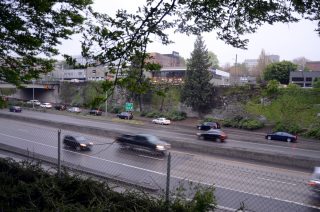

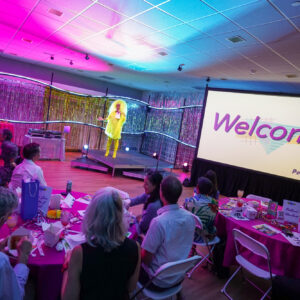
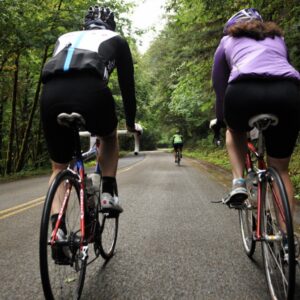
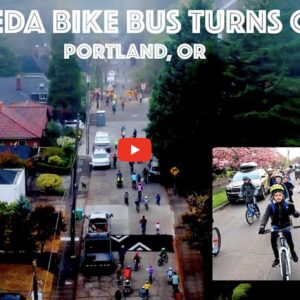
Thanks for reading.
BikePortland has served this community with independent community journalism since 2005. We rely on subscriptions from readers like you to survive. Your financial support is vital in keeping this valuable resource alive and well.
Please subscribe today to strengthen and expand our work.
*shakes Magic 8-ball* — outlook not so good, but wait until June to see whether THIS longshot pans out!
“Deliberate inefficiency is a trait of passive-aggressive behavior,” he said ironically.
How is building a private parking lot for Port of Portland considered the top transportation priority? I’m having a hard time understanding why it’s even considered transportation at all, since it’s being used to store private goods for export. At least ODOT is considering upgrades to the Amtrak Cascades line.
Particularly rich given the Port of Portland’s balance sheet. It’s just a giveaway to the railroad and will employ few.
The Port is a public entity sort of like TriMet, albeit one that gets revenue from private entities like Ford or other shipping companies. So technically this would be a public parking lot, or to be precise, a lot on public land being developed and then rented by a private company in order to use for export storage. (Edit 2:30 pm: Oops, I had the public/private backwards in an earlier version of this comment.)
The Connect Oregon program (that’s the state program we’re talking about in this post) is supposed to be for economic development-related transportation, including marine transportation. And 200 blue-collar jobs at the Port would definitely have economic benefit to the state, at least in the next few years, if indeed they do materialize.
An important question for the bridge is whether anyone thinks that vastly increasing the number of people who can bike comfortably to work would have any economic benefit to the state.
Right, but the key phrase there is “export storage”. The lot could just as well be used to store cases of beer, but because the products to be exported are cars, then it falls under ODOT’s jurisdiction. This is what I have a problem with.
I think it would still qualify for Connect Oregon even if the exports were beer.
Fair enough. Though I fundamentally disagree with the justification for transportation projects solely for economic development. There are plenty of other good reasons for improving transportation, and if only economics is considered, then the projects end up being doled out to the highest bidder.
Actually, you’re totally wrong. The fact that it’s a facility to store cars is irrelevant. CO funds are to be used on freight and marine terminal improvements, among other uses.
http://www.oregon.gov/ODOT/TD/TP/pages/connector.aspx
“An important question for the bridge is whether anyone thinks that vastly increasing the number of people who can bike comfortably to work would have any economic benefit to the state.”
Many employers believe in this and are now on record stating exactly that.
The parking lot is a pork barrel giveaway. Ford would be much happier expanding their plants in China and bring the subcompacts in through Portland. The only vehicles that Ford would export are oversized SUV’s and pickups.
or maybe corporate blackmail. “Ford has other west coast operations.”
Veiled threat much?
No kidding — these sorts of giveaways should be illegal, and even if they aren’t, Portland should stop playing that game. We don’t need to bribe people to come here.
As if shipping container companies will suddenly flock back to the Port of Portland?
Sorry rick, but autos being exported out of Terminal Six is done so via RORO (Roll On/Roll Off) Car Carriers. Autos imported and exported at T6 are a separate line of business. Has nothing to do with current state of the container market.
Mixed feelings about this. Sure it would be nice but that is a lot of money for one bridge Which would benefit a neighborhood with already a lot of assets.
I ride through there often and have never had an issue. This sort of money would be better spent building out the mup around swan island or the planned corridor along i84 from Sulivans Gulch to Gateway.
Where would I find these assets? (I walk or cycle over I-405 every day, so I would love to know). Thanks in advance.
Assets not to be limited to bike facilities. Think of what makes your neighborhood better than one found in Rockwood or Aloha.
Neither Rockwood or Aloha are even in the City of Portland. Given that most of the potential funding for the Flanders project is coming from PBOT levied development fees, are you suggesting that Portland should be spending money outside of its city limits?
I think Kittens’s point is clear — NW Portland is a more affluent area than other parts of Portland, so why should we be prioritizing projects there, rather than ones elsewhere?
I don’t happen to agree with that logic, but I think the meaning was clear.
NW Portland has the highest amount of affordable housing in the city.
I’ve heard that before, and, if true, it would be surprising. Is it really more affordable to live in NW Portland than, say, Brentwood-Darlington?
By “affordable housing” I mean income-restricted.
http://bikeportland.org/2016/04/11/nw-portland-is-beautiful-but-that-doesnt-mean-its-just-for-rich-people-180423
Ah, ok. My definition of “affordable” includes market-rate housing that is affordable, for either rental or purchase.
means testing for life/safety projects?
NW Portland is more affluent than some parts of Portland, and less affluent than some other parts of Portland, including many of the neighborhoods that the 20s Bikeway goes through. And yet somehow I never read people making an argument against the 20s Bikeway on that basis.
If the argument is that the Central City and the Neighbors West / Northwest area should get less spending per person than other parts of the city… then that’s the plan in the current TSP. But surely no one would argue that the area should get nothing?
I would argue that projects should be funded based on some formulation based on (# users) * (amount of benefit). I am not convinced that delving into the socioeconomic characteristics of those users results in better policy or outcomes.
I disagree, but only partially. I think *some* projects should be funded on a basis like that (maybe call it, “healthy people-moving”), and that others should be funded on the basis of equity, and that we should be clear and public about how much we’re spending on each. My personal belief is that, after many decades of inequity, equity should get at least half the funds.
Given where recent growth has been, and where the city is expecting future growth, that may serve to shift more resources to inner portland than you think.
http://www.portlandonline.com/portlandplan/?a=283476&c=51427
https://www.portlandoregon.gov/bps/article/531170
I’m willing to bet that basing projects on a formula like what I proposed would end up with a project list that looked very “equitable”, perhaps even more than your “50% for equity” plan.
‘Equity’ is not the same as ‘Equally’.
If you mean evenly distributed around Portland, your method is equal.
If you mean distributed so that some are benefited more than others, due to those benefiting more starting out with lesser facilities, and everyone ending up with the same opportunity as an outcome, then your method is equitable.
To me, “equity” is less important than “need” (which is what my formulation attempts to capture), and we should only worry about “equal” to the extent it is required for the political sustainability of the program.
http://www.portlandonline.com/portlandplan/index.cfm?c=52257&a=288629
A little old (2010), income distribution by neighborhood coalition from the portland plan.
NWNW is more than just the area that would be served by the Flanders bridge, but they have a higher share of high income (100k+) households than any district other than SWNI. NWNW also has the highest share of very low income (<25k) households, and the highest share of very low+low income (<50k) households. Describing the area as affluent seems to oversimplify matters somewhat.
https://nextcity.org/features/view/cities-build-bike-lanes-bike-share-bike-equity
You might find it an interesting read.
Wow, the list of letters in support of Flanders is really impressive:
– The BTA
– Northwest District Association
– Pearl District Neighborhood Association
– Old Town Chinatown Community Association
– Legacy Good Samaritan Medical Center
– Gerding Edlen Development
– Nob Hill Business Association
– Northwest Portland International Hostel
– Pearl District Business Association
– PNCA
– Vestas
There’s also en email from the ODOT Region 1 Planning Manager clarifying that PBOT and ODOT have had “extensive consultation” and that PBOT have been “a forthcoming and earnest partner”.
Yes. In addition, the project got additional support from the following entities, all of whom claim that the project would help them attract and retain employees, or help customers access their location:
– AirBnB
– Oregon College of Oriental Medicine
– 10 Barrel
– Zoom+
– SERA Architects
– Urban Airship
– Deskhub
– Mercy Corps
– Swift Agency
I thought the letter from the ODOT planning manager was less than enthusiastic and I would be curious to know more about the issues he says remain unresolved. But this is true.
I guess I read it differently.
At this stage of the project, where it is not fully designed, I would expect there to be unresolved issues. If any of the unresolved issues were likely to be fatal to the project I imagine he would have said so.
I ride the Tigard Street Trail every day and while I’m glad to see it will be finished I am surprised it got ranked so high. There is currently a MUP in place, it just needs a few more sections of pavement linking it to existing sidewalks and road crossings but is otherwise fully functional as is. It could be better but I would rather see more MUP like it installed in the area instead of polishing a small rarely used section. It appears they want to add landscaping around it and make it “nice” now that they have proven a demand… which to be honest surprises me. I ride it daily and most days I see maybe 2 people walking on it and every other day another cyclist during commute hours. The impact of this path in the middle of disconnected suburbia compared to NW is night and day. Very strange to me… obviously a much lower costs plays into it but would rather they use those funds to extend the network first.
Tigard is looking to make a possible skateboard park, add shrubs and trees, and benches on that new trail. It was part of the old Oregon Electric Trolley line that went through Garden Home and Metzger.
Another skatepark? Tigard skatepark is hardly half a mile from here… Maybe looking for tamer terrain though as Tigard is geared towards more experienced skaters.
Tigard needs to make it a more youthful city.
Creating jobs at the port is a good idea worth pursuing but if we want to talk about economic impact, investing in active transportation infrastructure will do much a better job in attracting employers and skilled workers to the Portland region than an export storage facility. Port of Portland has never played a big role in export on the West Coast, and its share has declined while our economy has continued to grow. People who make transportation funding decisions simply have no idea what is really driving our economy. In 2016, they believe investing in car storage will create more economic benefits than in making cities livable and accessible to all people.
“… investing in car storage…” charlietso
That’s car storage for cars to be exported to foreign markets, the business of which could potentially be very valuable to Portland and the U.S. Easy to crack jokes about ‘car storage’ on a bike weblog.
The Flanders St bike-pedestrian bridge of the future, when it eventually happens, and it likely will at some point…will be a nice, worthwhile addition to Portland’s transportation infrastructure.
It could have potential for dealing with some of city’s congestion issues, as the city continues to regard density as a good response to population increase; lots more taller buildings with more people living in them, in need of use of the street to get around. Hopefully, many of them will be willing to endure Oregon’s wonderfully cold, dark, rainy winters to use the bridge in great numbers, once it’s finally built.
Ugg… my point is just that NW. Portland doesn’t need a lot of help in terms of connectedness, or access to bike infrastructure OR for that matter does it need more treats from the city to help it succeed.
I mean for crying out loud there are parts of Portland without paved streets, sidewalks or even parks!
If you think it doesn’t “need a lot of help in terms of connectedness” then imagine that you’re starting at the Steel Bridge, and are trying to get to the Metropolitan Learning Center at NW 20th & Glisan. What non-terrible bike route are you now thinking of?
Well, it’s not direct, but assuming you’re riding over the top of the Steel Bridge, I would take Glisan, then right on Park, left on Hoyt, right on 9th, left on Johnson, left on 20th.
Key phrase is “non-terrible bike route”.
Neither “riding over the top of the Steel Bridge” nor Glisan fit that definition.
I’ll see your taking the lane on Glisan and raise you a ride in the bicycle lane on 122nd or outer division and.or Powell – heck lets do all three. Glisan is cake if you take the full lane.
I don’t think anyone is arguing that NW Glisan is the worst street to cycle on in Portland. But it’s a very very long way away from being type of world class environment for cycling that the city set out the goal in the 2030 bike plan. And maybe you’re ok taking the lane alongside trucks bound for the freeway, but many more people find it terrifying. (Personally, I’ll do it, but don’t enjoy it).
Cake? Are you serious?
The Flanders bridge is not going to solve the Steel Bridge problem. If anything, it will highlight it.
That portion of Glisan (before it starts climbing) is easier to take the lane on than the rest of it due to the slow-moving cars there. And you can turn off of it at 6th, after just 3 blocks of taking the lane.
Maybe it’s not obvious the way Bike Portland is reporting it, but the Flanders Greenway is a corridor that consists of a lot more than the bridge. Read the application for the Naito crossing: not only does it close the infamous “Naito gap” but it creates a legal crossing at Naito to connect Flanders with the Steel Bridge lower path. This crossing is where many people already illegally cross Naito everyday. The greenway would also include a diverter likely at Broadway or the Park Blocks.
Both the bridge and the crossing at Naito are needed to create a viable corridor on Flanders.
I agree that they are both necessary to make it a good connection, and it would improve my personal commute immensely. But the 405 crossing and the Naito crossing are separate proposals. I’m actually surprised the 405 crossing is rated higher than the Naito one — it looks like the Naito one is marred by a lack of information concerning the ROW there.
Where were all the containers being stored at the Port, when we still had a container shipping company using the Port? Can’t the cars be parked there?
The Port isn’t getting more business because of severe conflicts between the longshoremen’s union and the shipping companies. Unless and until that is resolved, not a penny of investment should go to the Port.
http://www.bizjournals.com/portland/morning_call/2015/02/inside-the-labor-dispute-thats-torturing-the-port.html
A multi billion dollar international company does not need a handout from a cash starved public agency. If they wanted that parking lot they would have no problem funding it. Why not add construction jobs instead, to build more housing at a faster rate. Use the money to improve transportation that will encourage more housing to be built. I’m not sure it makes sense to push hard to bring more workers to the city when there is no place for them to live locally. The new workers would just live and spend their money in Vancouver, so how would that help Portland anyway.
I might agree with you on the public paying for Ford’s storage lot, but Portland competes with other ports for business. That said…
There are a lot of underemployed workers living in Portland (many cycling distance to Rivergate/T6). Many of these underemployed in N. Portland come from a long heritage of working the industrial areas of our city. They are too often forgotten. These are our neighbors who are being displaced.
We need good paying traditional blue collar jobs that do not clash with livability. One of the greatest shortcoming has always been access. For example, Swan Island employees 11,000 metro area residents. Have you tried to ride your bike to and around Swan Island during rush hour — it is not very friendly. Swan Island is even a relatively short bike ride to Vancouver and certainly ripe for multi-modal.
Riding to T6 (or Kelly Point Park) from N. Portland is easy enough on the weekend, but there are a few very dangerous conflicts with freight (and trains) during the week. Front Ave is another failure.
Portland is not going to be 100% tech and design. We need to consider how we can safely encourage all types of day workers in all of our Portland proper work environments to have less dependency on cars.
The Flanders Bridge is another middle finger to those who live where through traffic cannot be avoided. It seems to me, the real issue with crossing 405 are the number of cars that are not sustainable in the long run on Glisan and Everett — cars we’re trying to keep out of downtown. Too, it is pretty simple to go under the 405.
It just seems like a complete glamour project. Entirely too expensive when considering effort to outcome.
How the projects in Tigard & Aloha get higher on the list than the Flanders crossing is a bit puzzling, especially since there is now no viable connection between them and downtown PDX. The Flanders crossing would put us on course for having one. One could also argue that it would create a reason for routing southbound ped / bike traffic thru Beaverton instead of via Barbur or Terwilliger.
Agreed, but it sounds like your hinting at the Red Electric trail as an alternative to Barber Corridor. Which could be good but winding disconnected neighborhood paths like the Fanno Creek trail are not good options for efficient cross town bike travel. The biggest challenge in getting from downtown to the west side is obviously the West Hills. Using an existing corridor is really the only feasible option for this. The most effective new bike route would likely be along Hwy 10. Getting a route parallel to Burnside could work as well but I know I’d like ride out of my way a bit if it meant a flat fast route opposed to winding up and over the hill.
Great reporting, BP!
This is a slam dunk and the overall #1 ranking with an approval letter from ODOT.
Good. I hope it doesn’t get built. The proposed bridge is a redundant, expensive give-away to a wealthy neighborhood. It’s embarrassing to see Portland try and fast-track such a silly project when families are suffering traffic violence on main streets & in neighborhoods.
I think completing that section of the Waterhouse Trail is a worthy project too. It closes the gap between Mission Oaks Dr & Bethany Court (https://goo.gl/maps/Sa4htbuTKXt), and is actually a section of trail that my family would use to get our son to school for the next 3 years.